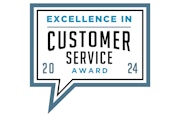How Smart Video Fuels Smart Business
Learn how video solutions with intelligent analysis capabilities can help benefit your drivers and enhance safety programs.
Read more
Small expenses can have a big impact on a business's bottom line. Printing documents, leaving computers on overnight and unnecessary vehicle idling are a few examples of inefficiencies that can have a huge impact on your budget.
Mounting expenses are often caused by small inefficiencies that are left unchecked. Some of these issues include:
An IDC study noted that companies could experience a 30% cost reduction if they’re able to extend digital workflows to ensure workers don't need to resort to paper processes. The same study found businesses would also increase revenues by 36%.
Paying attention to small details and any inefficient process - no matter how small they may seem - can reduce expenses and driver operational efficiency. Here are some cost cutting ideas which can help cut operational expenses:
Do the apps and services you use cover your major processes, or do workers have to periodically leave the digital world to get the job done? Choose technology solutions that let employees complete entire tasks digitally, so they don’t have to revert to paper at all.
For example, a vehicle location tracking system that features built-in reporting and data visualization tools can help you avoid ugly spreadsheets that you would otherwise print and hand out to your staff.
Plenty of businesses that depend heavily on field operations have great digital processes in the office, but require drivers to use paper invoices and work orders in the field. They then have to go back to the office and file these documents where another staff member will manually re-enter data at a computer. Take advantage of services that have mobile capabilities so drivers can enter that information in the field and in a format that’s compatible with your software back at the office.
A study from the Argonne National Laboratory estimated that medium-to-heavy and delivery trucks consume approximately 0.8 gallons of gas per hour. Gas prices are going down - AAA found the average cost-per-gallon for gas in the U.S. was $2.40 in 2015 - but that doesn't mean fuel consumption won't add up or that prices won’t go back up.
A fleet with 15 vehicles idling an average of 10 hours per month would spend $288 monthly on gas, or almost $3,500 annually, without performing any value-added tasks. Throw in added engine maintenance, oil use and similar costs, and you're left with a significant expense. This small process issue - drivers leaving engines on unnecessarily - can have a huge impact on your bottom line.
Every business faces small costs that are unique to its industry. For service fleets, issues like idling, neglecting maintenance - which can lead to larger mechanical problems - and harsh driving. Tools that give visibility into your fleet let you see detailed reports on these actions and adjust your business in response. By tracking these metrics, you can see the improvements your solutions create.
Plenty of the small operational expenses mentioned happen because everyday operations don't align with business culture. Small fleets focus on efficiency and depend on employees genuinely caring about the organization where they work.
Using strategic technologies and business initiatives together can give your workers the tools they need to keep costs down and bolster your bottom line. This can be possible when you close the final gaps in digital workflows and allow your employees to take full advantage of the applications at their fingertips.
Want more information like this delivered to your inbox? Check our Resource Center and sign up for our monthly newsletter.
Tags: Cost control, Field management, Productivity & Efficiency, Revenue & ROI




Find out how our platform gives you the visibility you need to get more done.
Learn how video solutions with intelligent analysis capabilities can help benefit your drivers and enhance safety programs.
Read moreAre you ready for vehicle tracking? Go through our checklist to learn the signs you’re ready to add fleet tracking to...
Read moreTechnology adoption helps fleets navigate operational obstacles. Learn what fleet management industry technology trends...
Read moreLearn how telematics can lead to operational improvements.
Read more
Get your free 2024 Fleet Technology Trends Report and see how organizations are: